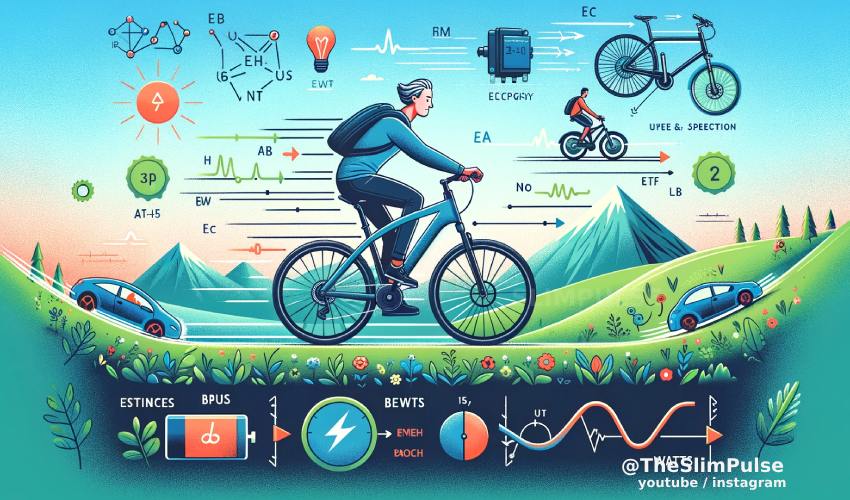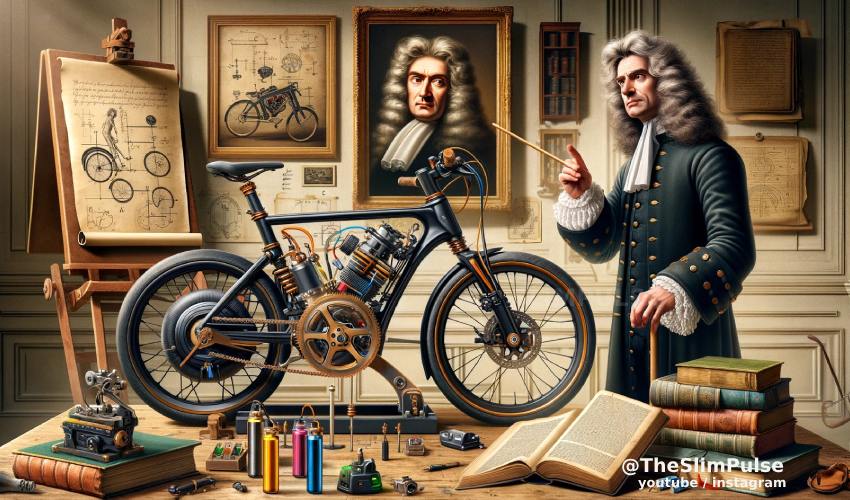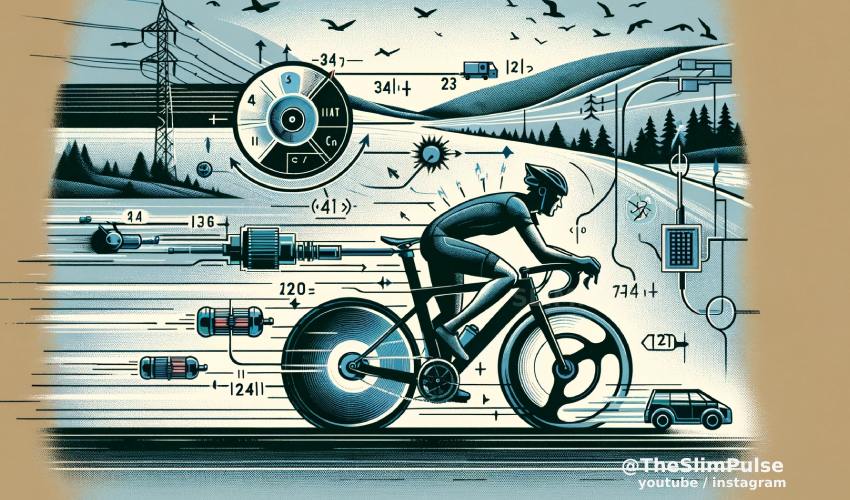Quick search
Speed pedelecs are becoming more powerful, but they are not allowed to exceed 45 km/h. In this article, we discuss the wattage of a speed pedelec, how much you need, and from when you can expect to reach 45 km/h. We also delve into the importance of newton meters within the context of these fast bikes.
Online, we see models being pushed, and without a limiter, they have enough power to reach speeds of 80 to even 100 km/h… don’t do this, they are not built for it.
The Difference: Wattage (Power) and Newton Meters (Torque)
Two big names: Watt and Newton. Wattage describes the power; the rotational speed of the motor. Newton meters or torque describe the force exerted.
In terms of speed pedelecs, you can say that Newton meters have more influence when accelerating and climbing hills (with weight). While wattage gives a better idea of the top speed and maintaining it (meaning how much you have to keep pedaling).
So, you need both; they are both important. To get a good idea of speed, we look at wattage; for power, we look at newton meters. Especially when you consider carrying weights (cargo speed pedelecs), newton meters become more important.

Legislation: Maximum Wattage
The law states that an electric bike may only produce 250W. At peak moments, this may be higher, but manufacturers don’t often provide much information about this. Since we don’t know the peak wattage, we look more at Newton meters to have something to compare.
This isn’t very accurate, but because e-bikes only reach a maximum of 25 km/h, it’s less critical.
For speed pedelecs, it’s different. The speed pedelec, with one or two drives, may produce a maximum of 4000 Watts. This is incredibly high. The law aims to leave room for a future market of electric two-wheelers (also think about e-vans for city deliveries).
Today, we see up to 1500W of power in the fastest speed pedelecs. And because of the high limit, we can simply compare them based on wattage. The higher the wattage, the easier the bike will reach and maintain its top speed.
How Many Watts Do You Need on a Speed Pedelec?
It’s a difficult question that we encounter everywhere. There’s no easy answer; it depends on your usage.
My answer: at least 750 Watts because I want to ride at 45 km/h. Additionally, I always want to be able to ride fast, so I tend to look at models above 900 Watts.
Much depends on your route and what type of speed pedelec rider you are. Delivering with a High-Speed Cargo Bike is not the same as using your personal speed pedelec.
We break it down a bit:
Weekend Riders:
This group primarily uses their speed pedelec for recreational purposes on weekends, often on varied terrain. They typically don’t need a constant high speed but do require sufficient power for varied routes.
A motor up to 600 watts may suffice. If speed isn’t important, you can achieve this with a mid-drive motor like the Bosch Performance Speed Line. If you still want to occasionally reach 45 km/h, then you would choose the same wattage in a rear-wheel motor.

Commute Riders:
Users who use their speed pedelec for commuting benefit from higher speeds to shorten travel time, especially in urban environments.
Since reaching 45 km/h is important and you don’t want to arrive completely sweaty, a high wattage is recommended. For us, this is somewhere between 850W and 1500W, depending on the type of motor.
This can come in the form of a very powerful rear-wheel motor; Stromer, Aska, … Or with two-wheel drive like in the Ellio or Specter speed pedelecs.
If the route is long, also consider additional features such as the Cruise control of the Ellio Max and Ellio Original where you don’t have to pedal hard to maintain the top speed.
In the City:
For daily city use, such as grocery shopping or visiting friends, extreme speed is less important than agility and responsiveness.
While speed may be important, in the city, we really recommend prioritizing agility, safety, and riding comfort before looking at speed. Models with a low center of gravity are our preference.
You can opt for mid-drive motors like the Isy Speed pedelecs (max 35 km/h), a Klever Y Gala 45 with a rear-wheel motor, or the Ellio Original which uses two-wheel drive and easily maintains 45 km/h when needed.
Long Distance Cyclists/Tour Riders:
This group requires a reliable, consistent speed over longer distances, often on varied terrain.
While reaching 45 km/h is important, for such distances, you also have other priorities. A powerful battery that can cover the distance and riding comfort that you can enjoy for hours. Back pain due to a too sporty position doesn’t seem advisable.
Models with mid-drive motors offer the most benefits here, although you usually don’t reach 45 km/h with these models. Here too, the Ellio Original plays a leading role as the speed pedelec with the largest battery (and riding comfort). And therefore best suited for these long distances.
Sporty and Off-road Users:
Users who use their speed pedelec for sports activities or off-road need high speed and powerful acceleration. This means forest trails and dirt roads.
For road bikes, it is advisable to choose a rear-wheel motor because they are lighter and do not limit your ability to climb. For mountain bikes, it’s different because they sometimes require a lot of newton meters. For mountain bikes, newton meters are actually more important, and you’re best off just opting for an e-MTB.
Transporting Heavy Loads:
For users who regularly transport heavy loads, such as delivery services, a strong motor is more important than high speed.
Speed isn’t as important, but due to the heavy weight, you do need some wattage to reach speed. With drive on both wheels, you still need over 1000 watts (1 kW) to pull weight.
In this case, the number of newton meters is also crucial, and it’s best to opt for two-wheel drive.
How Many Newton Meters for Speed Pedelecs
Newton meters are a crucial metric, especially when it comes to acceleration, climbing ability, and carrying weight.
While the focus often lies on the motor power expressed in watts, torque, measured in newton meters (Nm), provides a deeper insight into how the bike will perform under different conditions.
The formula for torque is: Torque = Force x Distance.

In this formula, ‘Force’ represents the force you exert (in newtons), and ‘Distance’ is the distance from the pivot point to where you apply the force (in meters). So, if you exert a force of 10 newtons at a point 2 meters away from the pivot point, the torque is 20 Nm.
Torque (Nm) determines the rotational force. In general, the higher the torque, the stronger and faster the bike will accelerate.
Here’s a brief overview to answer your question. How many newton meters does a speed pedelec need:
Note: There is an important consideration when comparing newton meters: the positioning of the motor(s).
Rear-wheel drive speed pedelecs: 40 to 60 Nm
Mid-drive speed pedelecs: 85 to 120 Nm
Two-wheel drive speed pedelecs: 100 to 150 Nm
For heavy weights, it’s best to opt for two-wheel drive (or all-wheel drive), although there aren’t many brands offering this yet. If you ride solo, you can choose a rear-wheel motor, which is sufficiently powerful.
It should be clear that you’re better off looking at wattage when comparing speed pedelec performance.
Rear-wheel Motors:
These motors often have lower torque compared to mid-drive motors, but this doesn’t necessarily mean inferior performance.
Due to their position close to the point of contact with the road, rear-wheel motors can effectively transfer power, resulting in rapid acceleration. They are often efficient in converting energy into forward motion, which is particularly useful on flat terrain or slight inclines.
Especially because mid-drive motors currently cannot deliver sufficient power (within the battery’s limitations), rear-wheel motors are the go-to choice for fast speed pedelecs.
Mid-drive Motors:
Mid-drive motors are known for their higher newton meters, making them particularly suitable for steep inclines or transporting heavy loads. Their positioning in the middle provides better balance and weight distribution.
However, a mid-drive motor needs to produce more power to compete with the direct speed of rear-wheel motors.
There is also a change happening in this regard; for example, Ellio has designed a mid-drive motor that drives the rear wheel directly. An innovation that revitalizes the rear-wheel-mid-drive motor debate.
Front Wheel Motors:
Front wheel motors are less commonly used, although their popularity is experiencing a resurgence.
In electric bicycles, they are more frequently seen, especially in compact and lightweight bikes. They are less commonly used for speed pedelecs because their torque and power transmission are not as good as with mid-drive or rear-wheel motors. They can also affect steering precision, especially at higher speeds or on slippery surfaces.
Recently, with Ellio and Specter, we see a front wheel motor being used as a complementary motor. This serves to improve acceleration but also provides more control while riding.
Speed pedelec brands can once again diversify by applying their own unique software to the motors. This is how we see the market evolving from using standard components to building a completely unique speed pedelec.

